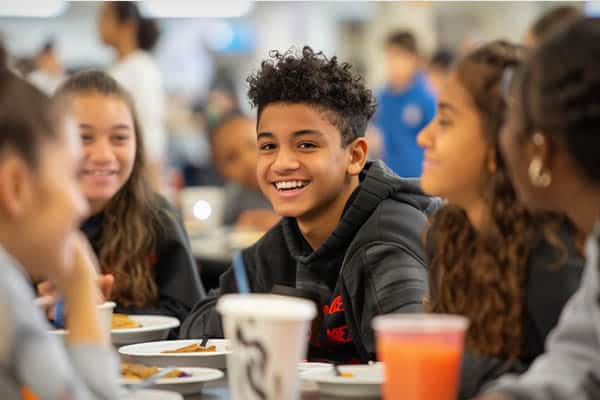“Empowering students with a voice on school boards is critical to building better school systems,” writes Logan Endres, senior policy manager for the Equity in Education Coalition, in a column in The 74.
“Student representation on school boards is a growing national trend. Washington state is a pioneer, with nearly half the 295 districts in the state including students on their boards. More than 500 student board members across 42 states represent more than 20 million students — a number projected to grow, according to the National Student Board Member Association
“This is a tremendous opportunity for school board members and district leaders to truly hear the perspectives of multifaceted, diverse students and to consider their experiences when making decisions that directly affect them.
“During the past five years, I worked closely with school board directors across Washington state and observed many district case studies where student representatives had a meaningful impact on policy. Here are five strategies and initiatives all districts can employ:
1) Avoid the tendency to appoint students who already hold leadership roles because they are known entities. Give the opportunity to all students via social media, school apps, posters, QR codes and word of mouth. Actively recruit students with varied experiences and backgrounds and others who are not usually involved in school governance.
2) Consider advisory voting — a simple process that enables student representatives to voice the concerns, needs and viewpoints of the student body and submit a non-binding vote. Members can consider student input when casting their votes. More and more boards are adopting this process.
3) Bring students into real-world experiences. One Washington district had each student representative analyze one section of a long-term strategic plan, break it down and clarify its implications for young people. Student representatives play a key role on superintendents’ advisory councils in some districts, which are designed to give district leaders direct student feedback. Student board representatives help collect a wide array of perspectives and ideas and bring that information back to the board to be considered in upcoming decisions.
4) Explicitly commit to providing opportunities for student voice. Whatever this is — board representation, surveys, focus groups, one-on-one conversations — put the input in writing so students know what to expect and can hold leaders accountable. One challenge: students must feel their feedback is taken seriously. Tokenism arises when students aren’t acknowledged, or no one responds to them. This apathy makes them feel that they’re not seen, heard or valued. Make sure feedback and accountability measures are in place to head off this potential challenge.
5) It’s not realistic to expect two or three students on a school board can fully represent the perspective of every one of their peers across the district. But districts can invite a wider pool of students onto advisory committees and topic-specific working groups. They can conduct polls and surveys and demonstrate how they use the results. They can hold leadership training workshops to prepare the next generation of student representatives.
“Injecting student voice into decision-making builds civic engagement and prepares students for the world beyond high school. For student representatives on school boards, learning about governance, legislative processes and budgeting is of great value. What these programs really accomplish is to ensure the health and vitality of the local school system and, more broadly, the nation’s democratic traditions.”
The 74





